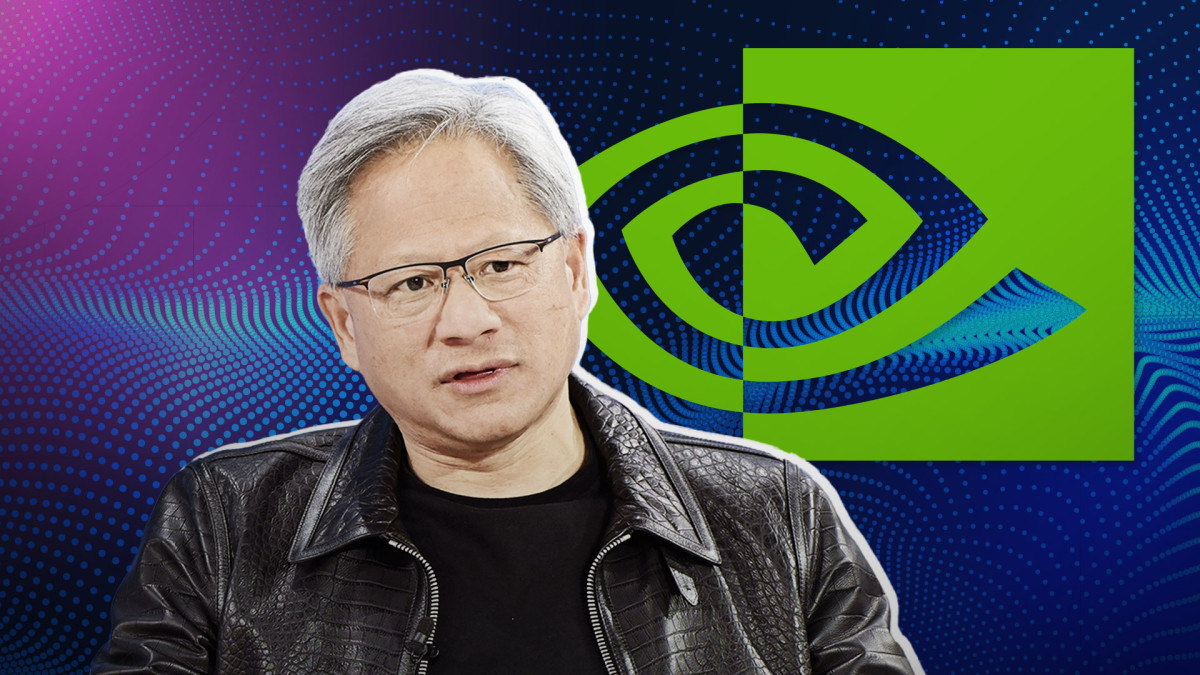
Nvidia (NVDA) shares moved firmly lower in early Tuesday trading as analysts revealed a host of price target changes heading into the AI-chip maker's crucial fourth quarter earnings report after the close of trading Wednesday.
Nvidia, now the market's third-largest stock in terms of market value behind Microsoft (MSFT) and Apple (AAPL) , could be the linchpin in the tech-focused Nasdaq's drive to reach a record this month, having risen more than 50% so far this year.
However, the shares of Nvidia and Magnificent 7 peers Microsoft, Meta Platforms (META) and Amazon (AMZN) have contributed around 75% of the S&P 500's total return, a concentration that suggests Nvidia's near-term fate will be crucial for both tech and broader market performance heading into the spring.
That in turn puts a great deal of focus on both the group's January-quarter earnings and its current-quarter outlook, which CEO Jensen Huang is likely to detail in a conference call with analysts shortly after.

"While [Wall Street] across the board is anticipating another major 'beat and raise' special from Jensen & Co., it's all about the pace of data-center artificial-intelligence-driven spending, as the only game in town for [graphics-processing units] to run generative-AI applications all go through Nvidia," said Wedbush analyst Dan Ives. He carries an outperform rating on the stock.
Supply-chain issues could cloud Nvidia outlook
"We believe peak spending is still ahead for the AI market as many enterprises head down the AI-use-case path over the next few years, and we are expecting more good news from the Godfather of AI this week," he added.
Near-term spending from so-called hyperscalers, the large cloud-computing-service providers that purchase hundreds of thousands of Nvidia chips, isn't likely to be a problem.
Morgan Stanley analysts have said they see cloud capital-spending growth rising 26% from 2023 levels this year, marking the biggest increase for the so-called Big 4 (Amazon, Google, Microsoft and Meta Platforms) since 2018.
Supply-chain issues, however, may cloud Nvidia's outlook as the capacity constraints tied to chip-on-wafer-on-substrate, or CoWoS, a crucial component of AI-chip making, weigh on deliveries.
Related: Nvidia's maiden 13F filing sends AI-focused tech stock soaring
Demand for the so-called high-end 'stacking and packing' technology has surged over the past two years as companies like Nvidia, Amazon and Broadcom (AVGO) , ramp up production to meet surging end-market interest.
Supply, not demand, is Nvidia's biggest risk
Taiwan Semiconductor (TSM) , the world's biggest chip contractor, has been struggling to meet that demand surge, forcing Nvidia to source the high-end packaging technology elsewhere, including with Amkor Technology of Tempe, Ariz., and United Microelectronics (UMC) of Taiwan.
"The demand actually is very strong," Taiwan Semi CEO C.C. Wei told investors on a conference call in late January. "Today's situation (is) that we cannot offer enough capacity to support our customers, and that condition will continue probably all the way to next year, although we are working very hard to increase the capacity."
Tristan Gerra, a senior research analyst at Baird, notes that Taiwan Semi is on track to double its CoWoS capacity this year, a move that should "help supply notably" over the second half of the year.
Gerra lifted his price target on Nvidia by $300, to a Wall Street high of $1,050 per share, in a report published Tuesday.
"Per our Asia field trip, demand for Nvidia's AI solutions remains unabated, with momentum from enterprise customers now rapidly building," Gerra wrote. "Upcoming Blackwell architecture will drive another significant step up in performance, while [average selling prices] will increase as well."
Nvidia will launch the next-generation B100 Blackwell in its AI-focused lineup later this year, adding more heft to its second-half revenue prospects and easing some CoWoS issues tied to its H100 benchmark.
Related: Nvidia stock is key to the Nasdaq making new record high
Nvidia faces a second near-term challenge in completing the launch of AI chips for customers in China, following a ban of high-end exports put in place by the U.S. government late last year.
Reuters has reported that Nvidia will delay delivery of the new H20 chips until this spring, a move that could put its market-share dominance in the country's $7 billion chip market at risk.
The H20 is the most advanced of the three chips Nvidia is developing in the wake of enhanced restrictions the Biden administration put in place in October.
Huang told a conference in Singapore in December that it was difficult to predict the revenue impact of the new U.S. restrictions on tech exports to China. But the group warned investors last fall that January-quarter sales to China would slow "significantly."
Nvidia sales likely to rise fourfold from last year
Nonetheless, Wall Street is still betting on a massive increase in January-quarter sales for Nvidia. Forecasts envision a fourfold surge that would take its top-line total to just over $20.62 billion, with profit margins expanding around 9 percentage points to a staggering 75.4%.
HSBC analyst Frank Lee is a bit more cautious, however, even as, in a note published Monday, he bumped his target by $35, to $835, while affirming a buy rating.
"We believe overall market expectations have risen significantly as consensus earnings are now approaching our forecasts," Lee wrote. "Hence, we see limited room for further earnings upside in 2024 relative to the sales and earnings surprise that we saw in 2023."
Betting against Nvidia, however, has prove a difficult task this year, according to S3 Partners, which tracks a host of short-selling data across all the major U.S. indexes.
More AI Stocks:
- Analyst reveals new Broadcom stock price target tied to AI
- AI stock soars on new guidance (it's not Nvidia!)
- Big tech stocks are doubling down on AI
Short-sellers bet against a company by borrowing shares and selling them. If the price of the stock declines, the short-sellers will buy back the shares at a lower price, return the borrowed stock (while paying a fee), and pocket the difference.
According to S3 Partners, short sellers have lost more than $5.97 billion betting against Nvidia this year, making it the least-profitable trade on Wall Street.
Nvidia shares were marked 4.8% lower in early Tuesday trading and changing hands at $691.12 each, a move move that would still leave the stock up more than 47% over the past six months.
Related: Veteran fund manager picks favorite stocks for 2024







